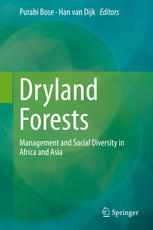

Most ebook files are in PDF format, so you can easily read them using various software such as Foxit Reader or directly on the Google Chrome browser.
Some ebook files are released by publishers in other formats such as .awz, .mobi, .epub, .fb2, etc. You may need to install specific software to read these formats on mobile/PC, such as Calibre.
Please read the tutorial at this link: https://ebookbell.com/faq
We offer FREE conversion to the popular formats you request; however, this may take some time. Therefore, right after payment, please email us, and we will try to provide the service as quickly as possible.
For some exceptional file formats or broken links (if any), please refrain from opening any disputes. Instead, email us first, and we will try to assist within a maximum of 6 hours.
EbookBell Team

4.8
84 reviewsThis volume provides new insights and conceptual understandings of the human and gender dimension of vulnerability in relation to the dynamics of tenure reforms in the dryland forests of Asia and Africa. The book analyzes the interaction between biophysical factors such as climate variability (e.g. droughts) with socio-political processes (e.g. new institutions and authority) and gender dimensions at various temporal and spatial scales. The book presents a number of case studies based on empirical research on forest tenure reform and it consequences on forest-dependent people. In particular, it highlights the interaction between legal, policy and institutional reform and the inclusion and/or exclusion of local people from deriving benefits from forest resources in the drylands. The book focuses on the questions how land tenure reform and natural resource governance impacts upon marginal groups (along individual, collective and gender dimensions); how do forest-dependent people prepare for and respond to vulnerability; and what is the effect of forest tenure policy reform on the human rights, gender and citizenship issues in relation to the use and management of forest resources and on conflict in forest zones. These issues are approached from the perspective of marginalized groups (gender and social diversity such as indigenous peoples and herders) in vulnerable dryland forests with a high risk of being exposed to climate variability.